Losing Produce To Blossom End Rot? Here’s What To Do!
As an Amazon Associate and member of other affiliate programs, I earn from qualifying purchases.
Most vegetable gardeners have dealt with blossom end rot. It’s a very frustrating problem to have. One day you’re walking through your tomato patch admiring your first plump green tomatoes and suddenly you notice that some are developing a brown mushy bottom.
Tomato blossom end rot is most commonly seen on young plants and starts as a brown or black spot on the blossom end of the fruit. The spot will usually get larger and continue to rot if the fruit is allowed to remain on the plant.
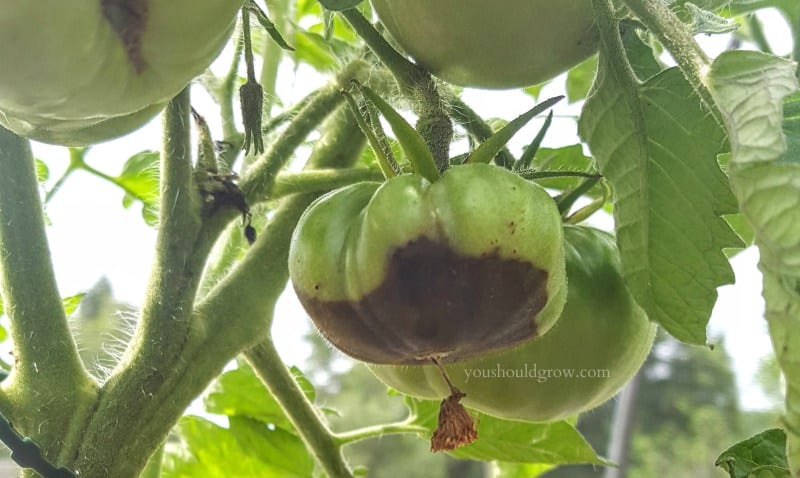
It’s an environmental condition and it can happen to any variety of tomato although some tomatoes are more prone to struggle with the disease.
Blossom end rot can affect other types of vegetables
Blossom end rot is most often discussed in reference to tomatoes, but it can also affect peppers, squash, cucumbers, and watermelon.
What causes blossom end rot on tomatoes (and other veggies)?
Blossom end rot is a disorder of growing fruit that causes the cells at the blossom end of the fruit to die. The cellular death seems to be due to a lack of calcium within the affected cells.
The exact cause of the calcium deficiency in the affected cells is largely debated, but we do know that the disorder only affects rapidly growing fruit. Size of the fruit matters as well because cherry tomatoes are not affected by the problem.
Blossom end rot occurs during periods of rapid growth and can be induced by:
- low calcium
- low phosphorous
- high magnesium
- high nitrogen
- high potassium
- high salinity
- drought
- waterlogged roots
- low humidity
- too much light and heat on the growing fruit
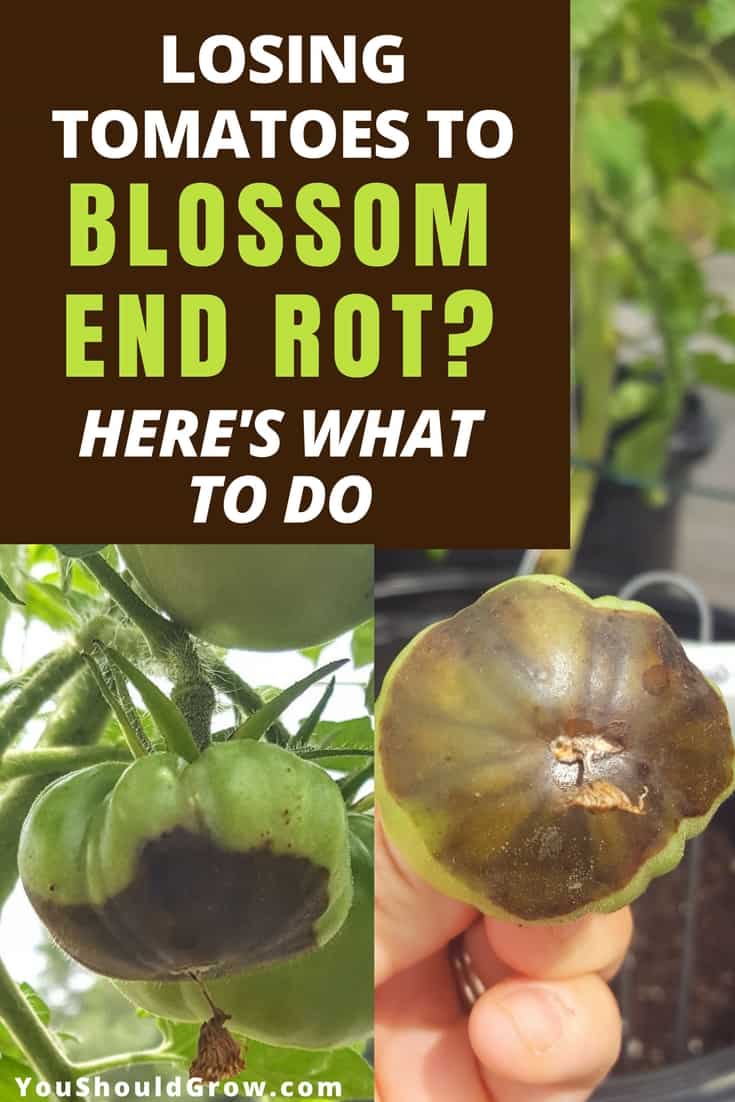
It’s extremely disappointing, but also very common to lose tomatoes to blossom end rot. And if it’s happening to you, don’t worry. You didn’t do anything wrong.
What to do about blossom end rot
At the point you see blossom end rot on your produce, there is nothing to do for that particular fruit. But you may be wondering if you need to treat the entire plant to prevent further tomatoes being affected by blossom end rot.
There are a lot of tips and suggestions for preventing blossom end rot on the web. Some of them are based in truth, and some are right out myths.
The truth is that blossom end rot is a complex process that is influenced by lots of environmental factors. So what has seemed to work for some gardeners will not necessarily work for other gardeners.
Common myths about treating blossom end rot
-
Heavily mulching with nutrient-rich compost and/or applying a calcium fertilizer will prevent BER
Some say that heavy mulching will protect your plants from the water stress which may lead to blossom end rot. It is true that blossom end rot can be caused by water stress, so preventing that with whatever means you choose can help.
However, unless you’ve had a soil test to confirm that your soil is deficient in calcium (which is usually not the case), adding calcium to the soil will not help prevent or treat blossom end rot.
In fact, some suggest that the addition of a lot of nutrients might encourage rapid growth which may lead to blossom end rot.
-
Planting tomatoes with Epsom salts and crushed eggshells ensures your plants won’t get BER
This is one of those garden myths that has been passed down for generations, but the reality is that neither of these things will affect whether your plants get blossom end rot.
Epsom salts contain magnesium and sulfur. These are important nutrients for plants, so if your soil is deficient in magnesium and sulfur, then it will help your plants.
High magnesium can compete with calcium uptake in tomato roots. Because of that, too much Epsom salt can make blossom end rot on your tomatoes more likely, so be careful not to overdo it.
Read 5 Unbelievable Things Epsom Salt Does For Tomato Plants
Eggshells do contain calcium, but the calcium from the eggshells will not immediately be available for uptake by the plants. They’ll take several months to be decomposed into the soil and become available to your vegetable plant.
Adding eggs and eggshells can improve the health of your soil over time but it’s not an effective way to treat blossom end rot on your tomato plants.
-
Adding lime or dolomite lime to the soil helps control blossom end rot
It is true that lime can improve the quality of certain types of soil. Regular lime is also a source of calcium and dolomite lime additionally contains magnesium.
If your soil is acidic (pH is too low), the lime will also help neutralize the pH into a comfortable range for your plants. However, the effect can take several weeks to months, and you should always check the pH of your soil before adding lime.
If you get your soil pH too high, it can be hard to grow anything. It’s super easy to find out the pH of your soil with a soil pH kit.
Here is some more information about testing the pH in your garden.
-
Blossom end rot sprays help treat and prevent BER
There is insufficient evidence to support that tomatoes can absorb calcium through the fruit or will transport calcium supplementation from the leaves to the fruit.
The problem is usually not a true lack of available calcium anyway. The problem is that the plant is sending available calcium to other parts of the plant and sacrificing the blossom end of your fruits.
So what should you do about blossom end rot?
We know for sure that stressful conditions can lead to blossom end rot, so your best bet is to make sure your tomato plants aren’t stressed out.
One of the most important things to do is to make sure they have a regular supply of water. Water stress is a huge trigger for BER on tomatoes as well as other veggies.
Burying the stem as deep as possible, leaving only 2-3 sets of leaves above ground, will help establish a strong root system. And mulching the base of the plant at least 3 inches thick helps keep the soil moist and suppresses weeds.
Make sure that your plants are getting the nutrients they need as well. And be sure to check your soil’s pH. The ideal soil pH for tomatoes is 6.5. If it’s over 7 or under 6, your plants will have a hard time taking up nutrients from the soil.
But don’t overdo it with the water or fertilizer, either.
Make sure that you are watering regularly, but not over-watering, and fertilizing appropriately, but not over fertilizing. Tomatoes like a high nitrogen fertilizer at planting and a phosphorous rich fertilizer when they start flowering.
Sound like too much to worry about? Well, the good news is you don’t really have to worry about it.
Because blossom end rot will usually go away on its own.
Based on the current research, BER seems to be a condition that most plants will grow out of. So whether you try one of the blossom end rot treatments or not, your plants will likely recover with the next round of fruit.
And if you’re really having a problem with BER, just know you’re probably not doing anything wrong. There are some types of tomatoes that are more prone to blossom end rot.
We’ve certainly experienced years where we lost most of the tomatoes on some plants due to blossom end rot.
Among tomato nerds, it’s well known that paste type tomatoes are more prone to BER. There are some blossom end rot resistant paste varieties, but even those can have some BER on their first fruits.
You could also try cherry and heart-shaped tomatoes as they almost never have trouble with end rot.
If you find that your veggie patch is plagued by blossom end rot this year, the first thing to do is check your watering schedule and get a soil test to make sure that your soil is within the appropriate pH range.
The next thing to do is pull off those mushy fruits and toss them into the compost or chicken pen. And take heart…
You didn’t do anything wrong, and there’s nothing you can do to fix it.
You can, however, avoid the problem by being mindful of how you take care of your plants and by planting more resistant tomato varieties.
Starting tomatoes from seed is something anyone can do, and you can find lots of options for tomato varieties in seed catalogs.
The last thing I’ll say about BER is to make sure you’re taking notes in your garden journal so you can avoid varieties that don’t perform well for you. It would be a shame to waste another season on a type of tomato that just won’t ever be happy in your garden.
What varieties of tomatoes have you grown that have been susceptible or resistant to BER?
Share your experience in the comments below!


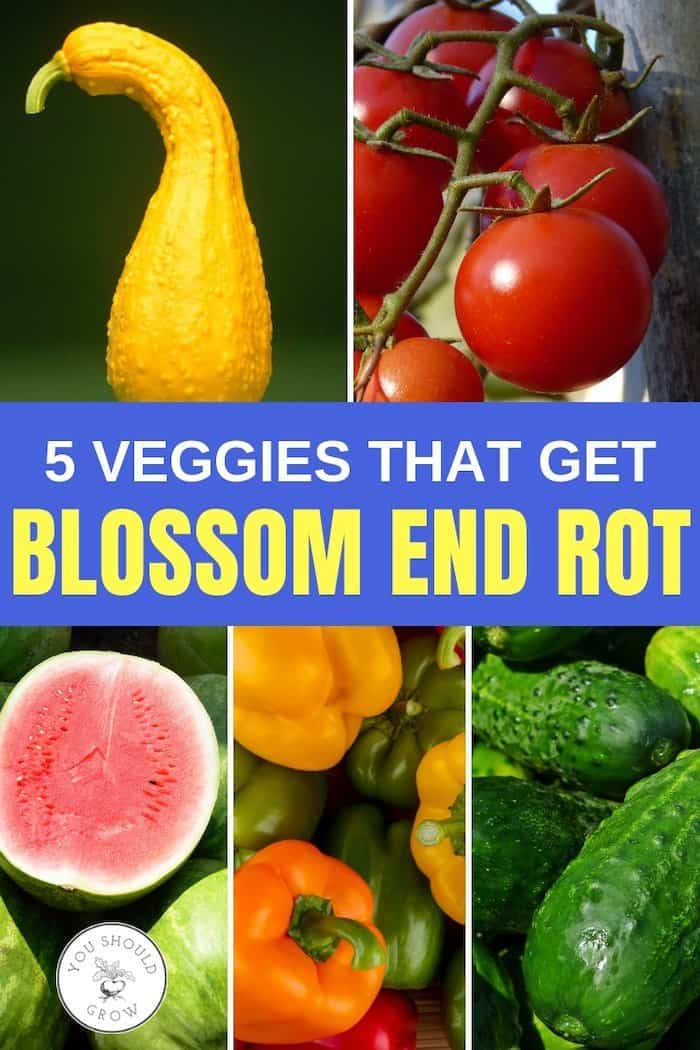
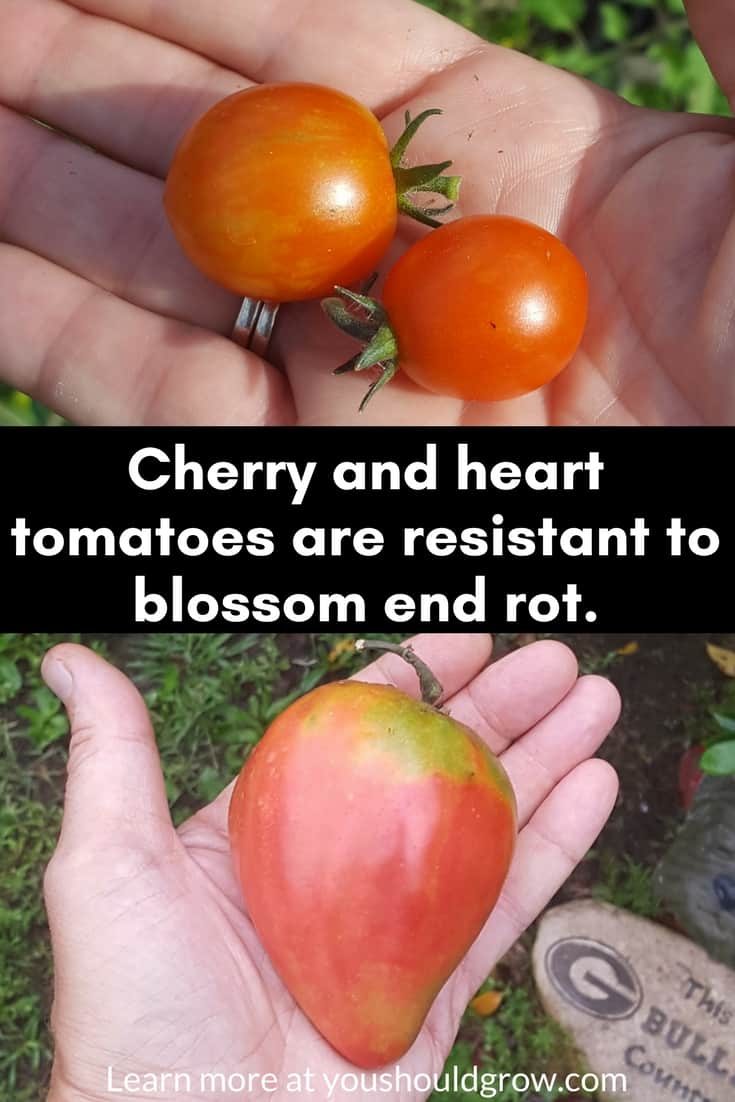
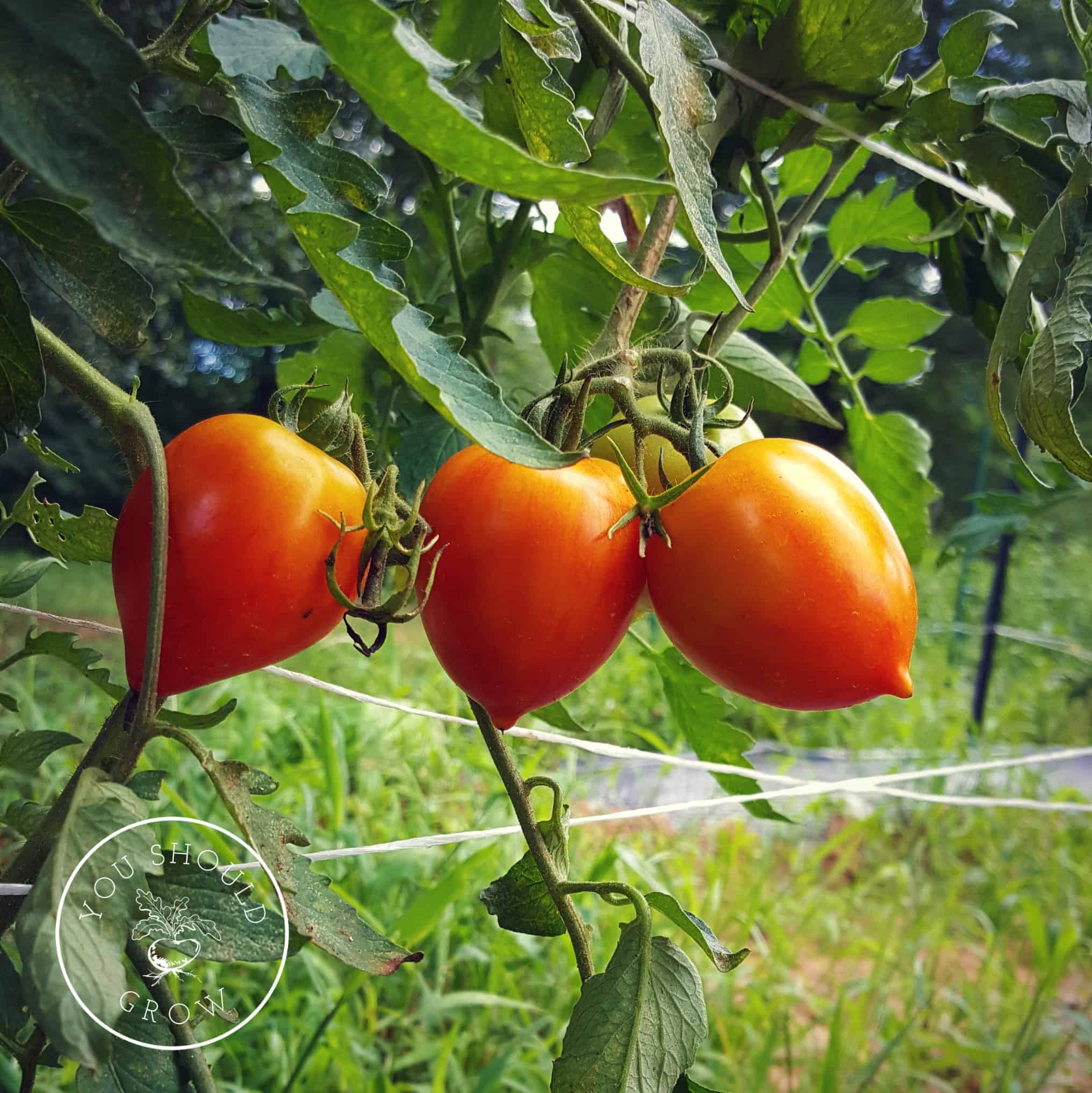
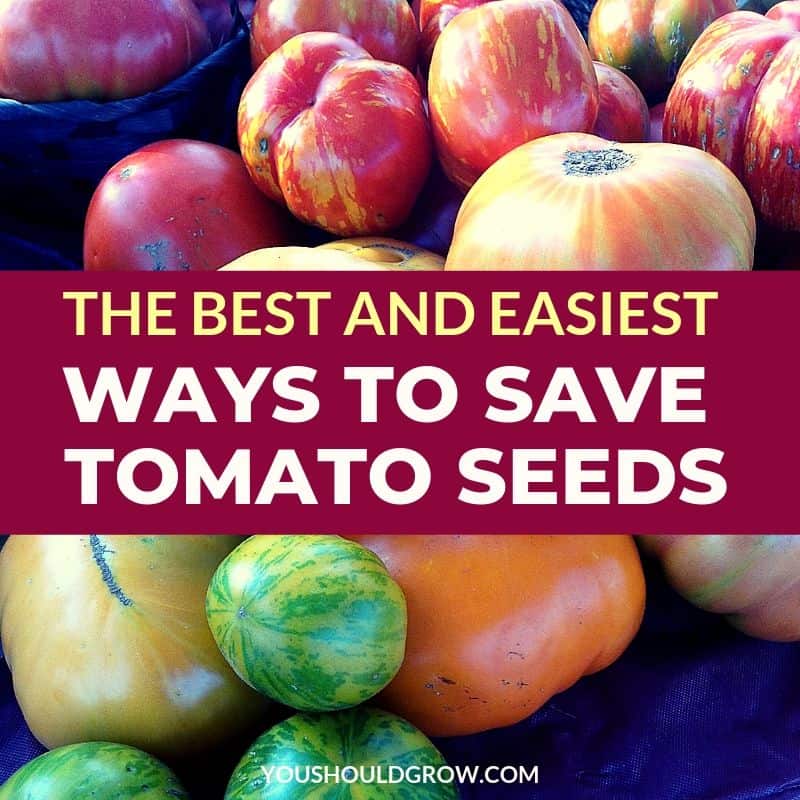
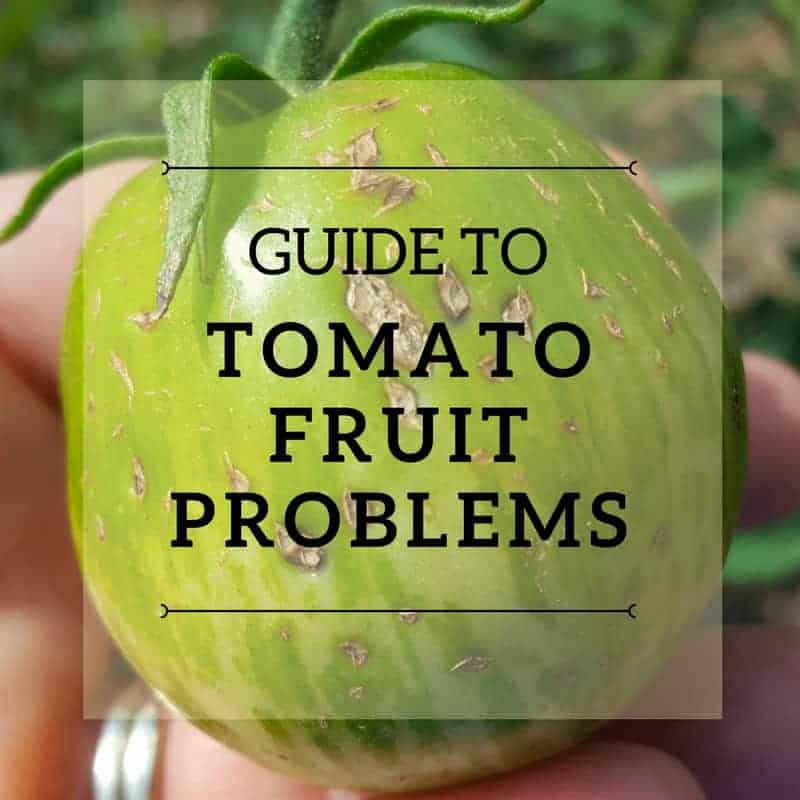
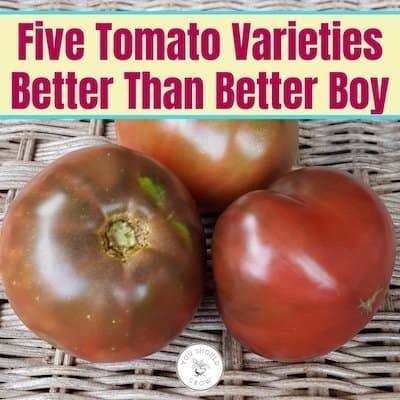
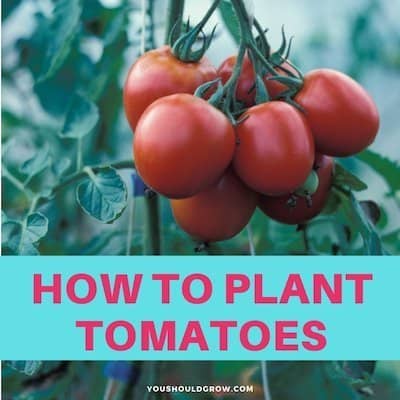
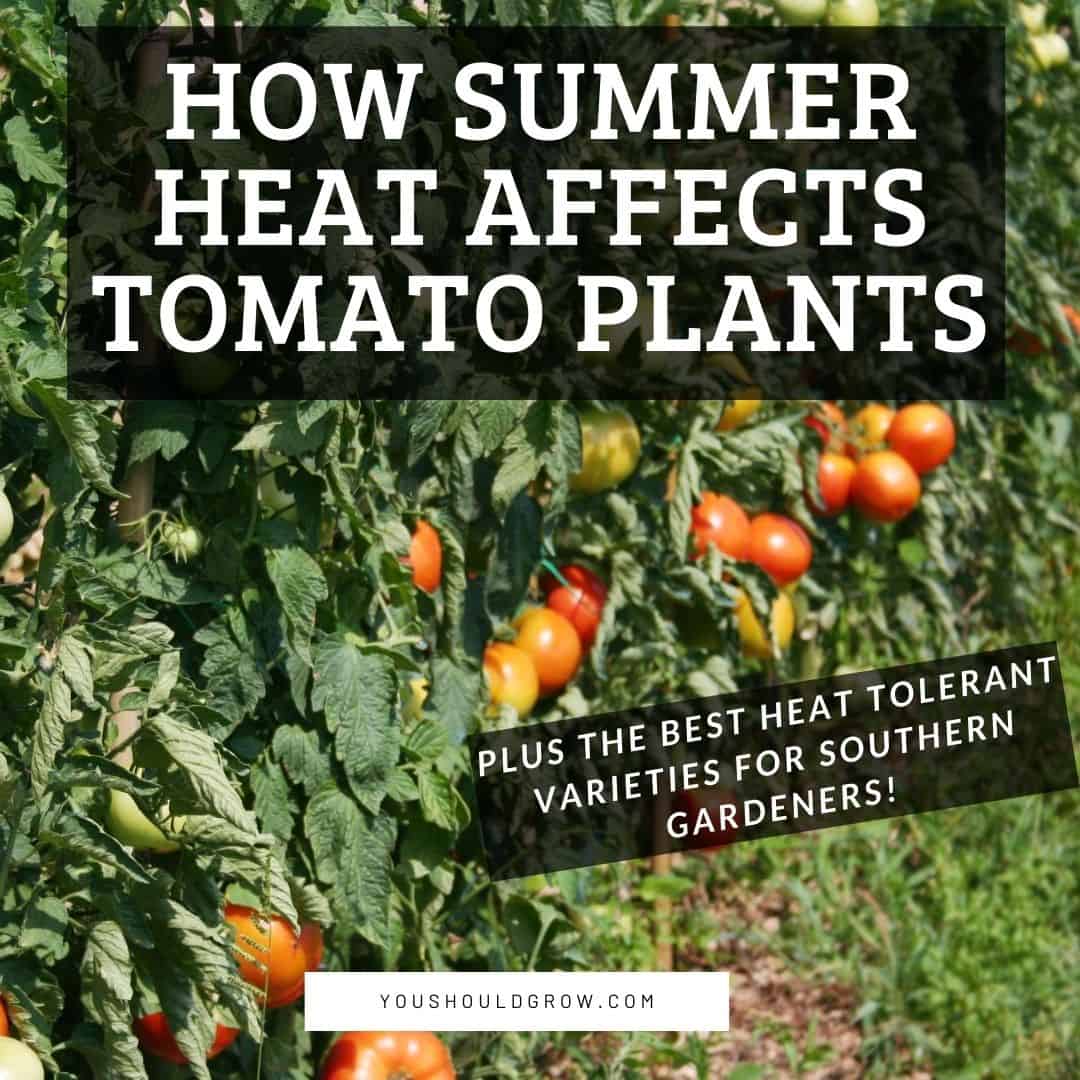
What did you mean by ‘first round of tomatoes’?
Hey Marie! I’m sorry if that is not clear. The ‘first round of tomatoes’ would be the very first or earliest tomatoes that appear on your plants. Thanks for asking! 🙂
Now I feel better about still getting rot despite my best amending efforts! It seems that growing resistant varieties is the best for me.
It’s a total game changer, isn’t it? Now we don’t have to stress over losing tomatoes to BER…it’s still sad when it happens, though.
I really like the scientific articles link! That give me more confidence on what I’m reading. I start to plant cherry tomatoes, cilantrillo, culantro and pepper.
Yay! Thanks for visiting, Shirley!
Which tomatoes are least resistant to blossom end rot?
The paste tomatoes, like Romas, are always the worst to get BER. Cherries and oxhearts are usually a bit better.
I have had some BER on my Big Red brand tomatoes that we purchased. Its odd that the same vine will have it on tomatoes growing next to each other, but only one in the area. My Pink Lady plant has none but is next to them? Now my Roma’s grown from seed in my elevated box are doing great have had one but no more. They are getting huge too. Makes me not feel bad. Thank you from Michigan!
I have been going my tomato plants in the pot but in a tropical environment so it’s actually really hot here. the soil ph is really high is there anyway for me to lower the soil pH without harming the roots.
I hope you tested your soil to determine the pH. In a container, it is hard to amend the soil without disturbing the roots. If you can find a liquid sulfur fertilizer (like this) you could use that to lower the pH. But be careful. Tomatoes are comfortable in a pH range between 6 and 7, so don’t overdo it.
Thanks for information very helpful in determining my problem which I already knew what it was my plant are rabidly growing due to over fertilisation a friend had a access to chicken manure and we applied it to my garden now my squash has BER
Oh that’s a bummer about the squash! Fresh chicken poo would be waaayyy too much. Was the manure composted or just straight up doodoo?
When I didn’t know anything about gardening, I had the best tomatoes. That was 20 years ago. Seems the older I get, the dumber I get. I’m ready to start from scratch and your tips are a huge help. Thanks, Steve
Hi, Steve! I’m glad I can help. Hopefully, this is a great year for your garden. 🙂
I am growing my tomatoes in large plastic pots. I have had no issues until last with my beefsteaks.
This year I am growing my first San Marzano. The first few small emerging fruits already had rot on them.
I generally water every two days, unless the temps get into the high 80s-90s.
Could it be I need to water a little in the morning and again in the late afternoon as the large plants are not getting enough water because they are in pots?
Hi, Dominick! Sometimes the first few fruits on a plant will have ber on them. Water stress can lead to BER, but I can’t say if that’s what’s going on with yours for sure. What about fertilizer? Did you add some when you planted them? Rapid growth can lead to BER, too. We almost always have trouble with BER on the elongated paste tomatoes like San Marzano, so it could also be just the variety is especially prone to rotting. 🙁 I know it’s really disappointing. I hope it works out for you!
I’m getting a lot of BER on my San Marzanos. First time I’ve grown them so probably not again after reading that they’re prone to BER. My Bell peppers are getting BER too so I thought I was doing something wrong in my soil..
MY garden is in a drip system, every other day, for 49 minutes. I foliar feed compost tea once a week. I am just now noticing BER. Too much water? Too much tea?
Hi Leisha! It could be either of those. BER can be caused by any kind of stress including too much water and high nitrogen fertilizer. We’ve also had varieties from which we never got a ripe tomato due to BER. That’s why we don’t grow any of the elongated or sausage type tomatoes. Sometimes, the BER will go away later in the season. Check your soil to see if it’s wet or soggy to determine if you need to back off the watering a little.
Very good article. Thank you for addressing this issue scientifically and not promising any quick fixes. Blossom end rot has affected me for years and it is EXTREMELY DISHEARTENING to see precious fruits rot away. I am hoping that some day they are able to create rot resistant strains of peppers.
Hi, Mike! Thank you. I agree that losing tomatoes to BER is heartbreaking! And to find it on your peppers and other fruit is just doubly sad. We had blossom end rot form on our watermelons this year. 🙁 If you’re having trouble with it year after year, I recommend checking the pH of your soil and/or looking for blossom end rot resistant varieties – heart shaped tomatoes are a good choice. As far as peppers go, I don’t have any recommendations unfortunately. Here’s a pdf from Cornell University that might help with your pepper varieties. There is only one listed as resistant to BER, but it may be worth a try. Best of luck to you and your garden!
All 30 of my precious tomato plants are showing signs of BER. If I pick the tomatoes green and lay them out to ripen, will they still develop the rot or could I save my crop this way?
Hi, Anna! Oh my gosh do I know your pain! Usually, blossom end rot develops before the tomato ripens enough to pull it off the vine. Do you have time to address any stress issues and see if the next round grows out of it?
I have two tomato plants side by side. Better Boy and Celebrity. I’ll never plant celebrity again. It just doesn’t do as well with heavy rainy periods and has a lot more blossom end rot than better Boy.
I live in NC. Celebrity always does much better here. It produces more tomatoes too.
It’s refreshing to see a well-supported article that doesn’t just repeat the myths about this. Thank you!!!
Thanks! 🙂
It’s Isaac it’s very unfortunate that BER is creating more loses to us tomato farmers I have always struggled to have the best of the tomatoes on the market but I have suffered BER and it has discouraged me so much , however from your scientific point of view I think I will be able to make it next time thanks for the eye opener now I believe I need to involve a soil scientist for batter results
Thank you so much for the information. We had a dry spell and noticed bottom end rot on our first fruits of paste tomatoes. We hope that the next round will not be affected.
I live in Zone 3b so we only get one round of tomatos. Is there anything I can do to stop BER for the only tomatos I’ll get each year ?
The best thing is to plant BER resistant varieties. Here are some recommendations: https://youshouldgrow.com/best-tomatoes-paste-sauce-salsa/
I don’t have BER, but nearly all my tomatoes have a blackening at the stem end or a cracking. Is that also a result of lack of calcium?
Hi, Pete! For some varieties of tomatoes, it can be normal to have some cracking at the stem end. We just cut them off and eat the rest. In or around the cracks, some black fungal growth can happen. If it’s just a little at the stem, I would cut it off and eat the rest. If the cracking extends across the tomato, that can be due to heavy rain/watering after a dry spell. Those tomatoes are still edible if you get them right away. But they, too, will get some moldy growth on the edges if left too long.
Hi! I grew Roma tomatoes (in raised bed, organic grown) for 30+ years in CT. Moved to the SE coast on NC – completely different climate. Strong sun compared to New England, VERY hot in full sun and very humid). Am now growing, for experimental purposes, a half-dozen Romas, with similar amount of yellow-banana peppers. The peppers have been great, but the tomatoes are suffering from BER. I’m using pots, which I’ve never used before. The tomatoes are setting fruit but…
I’ve used Miracle Gro on them for fertilizer. This is a new game for me, as I never used fertilizer before. Should I just snip off the fruit with the BER, cease fertilizing, and moderate the waterings? (I do have a soil test kit on order.)
Any advice would be appreciated!
– Howard
Hi Howard! Yes. Remove the BER fruit, stop fertilizing with Miraclegrow. It has too much nitrogen. With containers, you have to be extra careful with watering. You don’t want to stress them out by holding off, but also watering tends to wash out fert in containers. I’d recommend switching to something like Tiger Bloom which as more potassium. Definitely check your soil pH as well. I will say, though, it could be the variety. We have trouble with romas here in GA, too. I made a list of BER resistant paste tomatoes if you want to take a look.
Wow! Thanks so much for the information!! I will definitely take a look at the list of BER resistant paste tomatoes, as well as Tiger Bloom fertilizer. Greatly appreciated!
Anytime! 🙂
Hi
I’ve used an Earth Box system that last two years and had only a few with BER the first year. This year, almost all from both plants were affected. The first year we had two varieties of Romas. This year, one Roma and one beefsteak. Is the use of this system working against me? You supposedly can’t overwater with this system so I’m at a lose.
Did you use all new soil or any fertilizer? Old dirt or too much fertilizer could be a factor?
Hi – I used new potting soil for the pots. Seeds were started in new potting soil, as well, and then transplanted to the pots. Used Miracle Gro for Tomatoes. Perhaps too much Nitrogen, not sure. I did start them late, and it was very hot here in southern coastal NC this past summer.
Miracle gro and heat/humidity can definitely contribute to blossom end rot.
First time growing Roma tomatoes. They are just coming out, but have the brown/squishy looking spot on the bottom. Do I need to just cut them off?
Yes those have the blossom end rot. Roma tomatoes are bad to do that.
Hi there! We’ve had 8+ days of over 90 degree heat and sunshine here in PA, causing my indeterminate tomatoes to wilt and droop by 10:30 am. So I’m watering them twice a day – is this be too much watering? I just noticed the BER on every piece of fruit on one of my Better Boy plants. Removed all of them and am keeping my fingers crossed. What’s worse: over watering or under watering in this heat??
Hiya! So both over and underwatering can cause problems. It’s a fine line sometimes esp when it’s super hot. I can’t say for sure which is worse for your plants, but keep in mind that they can droop a little when it’s hot but they perk up when it cools off. They can also droop from too much water, so I’d be poking a finger in the soil to determine if it’s wet or dry then water accordingly. Over fertilizing is also a cause. The heat can decrease tomato production, but hopefully your next round of fruit does better for you!
So if I see that it is rotting should I cut it off? Or let it grow?
I grow the Siberian tomato along with tradiational varieties. The latter often get BER but Siberian NEVER. They’re small, but quite prolific, very tasty and super-early, about 2-3 weeks before any other varieties I’ve grown in over 40 years.
We have been gardening for 50 years. While we only put in a small garden now, I grow tomatoes to make pasta sauce plus some for fresh eating. We are in the Sacramento, CA area. Our summers can be triple digits during the summer. As I read posts about tomato growing I have tried the ideas but have more and more problems. My husband acquired chicken compost and added it to our raised beds. In addition, I also added epsom salts and powdered egg shells ( I cook my shells for 1 minute then grind them in a coffee grinder). Now that our soil is overloaded with fertilizer, other than getting a ph test kit, what is the best route to prepare for next season? My husband bought some sun screens to cover the garden and protect it from the extreme heat, but I wonder if winter rain will flush the soil enough?
What is blossom end rot spray and where do you buy it please